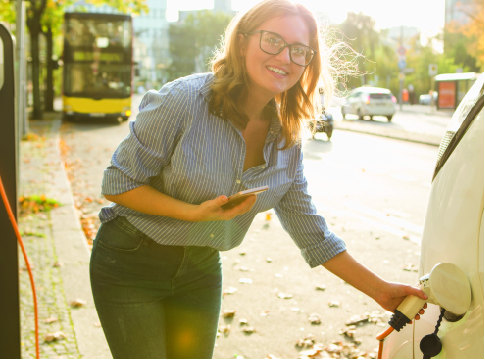Related News
Related News
-
Energy shortfall of 9 gigawatts projected for the Northwest
By 2030, a dry year combined with soaring energy demand during extended cold snaps could lead to rolling blackouts, a new study warns.
Find Out More -
Sustainability Snapshot - Celebrating Energy Efficiency Projects in the Community
Sustainability Snapshops highlight impactful projects completed by EWEB's Customer Solutions department, as a way to celebrate the meaningful work happening behind the scenes.
Find Out More -
McKenzie Valley electric service territory realignment study reaches key milestone
EWEB Commissioners approved a resolution authorizing the General Manager to negotiate and execute agreements with Lane Electric Cooperative regarding a potential realignment of electric service territory in the McKenzie Valley at the Board’s December meeting.
Find Out More -
EWEB Sets 2026 Budget and Rates, Advances Evaluation of McKenzie Valley Service Territory Realignment
Taken together, the 2026 budget and rate adjustments and the territory-realignment evaluation reflect EWEB’s dedication to responsible financial stewardship, modern, resilient utility infrastructure, and thoughtful planning for the future.
Find Out More -
EWEB secures $2.5 billion of reliable, affordable, carbon-free energy for customers
The new contract with EWEB’s largest energy supplier, the Bonneville Power Administration, forms the foundation of a diverse energy portfolio.
Find Out More -
Women in STEM: Meet the Hydro Project Engineer Building Habitat for Salmon
EWEB Engineer Associate Val Chang found her way to the McKenzie River from Los Angeles, inspired by heritage trips to the waters of Taiwan and key mentors along the way.
Find Out More -
Public Power Week Poster Contest Winners 2025
The results are in! View the winning posters from EWEB's 2025 Public Power Week Poster Contest.
Find Out More -
EWEB Hometown Heroes compete internationally
Out of 290 teams from 14 different countries, EWEB's Lineman Rodeo team places in the top third of competitors.
Find Out More -
Vote for your favorite Public Power Week Posters
The top five submittals will receive awards. Help us pick the winners.
Find Out More -
Electric Projects underway in North & South Eugene
Underground lines and disaster-resilient power poles are part of EWEB’s infrastructure upgrade near Eugene’s largest natural resource area.
Find Out More -
EWEB general manager to retire in 2026
EWEB launches nationwide search for next leader to continue the progress of the last decade and ensure a smooth transition.
Find Out More -
The Bonneville Power Administration Rate Change and Your EWEB Bill
BPA’s finalized rate increase is smaller than projected, and EWEB’s pass-through adjustment effective October 1, 2025 will now be 2.7% for residential customers—down from the anticipated 4%.
Find Out More -
EWEB completes helicopter installation of salmon habitat features
EWEB adds downed trees and 2,000 tons of gravel to the Uupper McKenzie River below Tamolitch Falls to improve spawning habitat.
Find Out More -
Oregon’s New Utility Laws and How EWEB Customers Already Benefit from Fair, Transparent Rates
Oregon’s POWER Act and FAIR Energy Act target investor-owned utilities. Learn how EWEB’s local, community-owned model already meets these goals.
Find Out More -
Court rules in favor of EWEB in Carmen-Smith litigation
The U.S. District Court in Eugene has granted EWEB's motion to dismiss a lawsuit brought under the Endangered Species Act pertaining to fish passage at EWEB’s Trail Bridge Dam. The favorable ruling clears the way for EWEB to continue advancing towards implementation of permanent fish passage at the dam.
Find Out More - Show More
EWEB Shares Preliminary Results of Electrification Impact Analysis Report
August 11, 2020

Eugene Water & Electric Board is exploring the impacts of widespread electrification on our community. The analysis is intended to address a growing interest in understanding the relationship between fossil fuels and electricity and potential transitions to address climate change.
Phase 1 of EWEB's Electrification Impact Analysis Report focuses on electrification of small vehicles, and domestic water and space heating.
"The context for EWEB doing this study is that climate change strategies around the country and locally tend to focus on electrifying transportation and buildings as a way to meet goals," Chief Energy Officer Susan Ackerman told EWEB Commissioners during the Aug. 4 Board meeting.
At the public meeting, which streamed live online due to the coronavirus pandemic, EWEB presented preliminary results of Phase 1 of the study, including the following key findings:
- Absent legislative action or dramatic economic changes driving consumer behavior towards electrification, average electric energy loads will increase at a manageable pace in the next five years.
- Early analysis indicates that resulting carbon reductions are meaningful and enhanced with energy efficient technology choices, and these benefits can be improved if peak demand is managed.
- Electric Vehicles represent a significant carbon reduction opportunity and load impact compared to space and water heating.
- The EWEB transmission and distribution system is forecasted to maintain adequate capacity and ability to meet the increased demand of electrification in the near term.
Under the highest forecasted electrification rates, EWEB could experience load growth of 54 aMW (around 20 percent increase) by 2050. The potential carbon savings by 2030 is around 109,000 MTCO2e.
"What we are learning in this first phase of this study is that EWEB is well-situated to assist the community with climate goals," said Susan Ackerman, noting that these preliminary results represent early findings which are subject to change between now and final publication, scheduled for fall 2020.
Relating potential carbon savings to City of Eugene CAP 2.0
Eugene's Climate Action Plan (CAP) 2.0 sets a goal of reducing community carbon emissions by 790,000 MTCO2e by 2030 and identifies a series of actions that will reduce our community's carbon footprint. But the CAP 2.0 actions alone do not reach the 2030 target.
The early results of EWEB's electrification study indicate that aggressive conversion of light-duty vehicles and residential and commercial space and water heating plays a limited role in closing this gap.
"The good news here is that electrification really does lead to carbon savings," said Susan Ackerman. "But even assuming a high level of electrification there is still quite a gap between what we could achieve in terms of carbon reductions and the City of Eugene's climate action goals."
Put another way, EVs and electric space and water heating are only one small part of the solution.
In the coming months, EWEB will refine our assumptions and early estimates that are reflected in the preliminary Phase 1 study. This will include discussions with City of Eugene staff to better understand the basis for EV-related carbon reductions in the CAP 2.0 report.
Further study planned on community solar, regional grid impacts
Three members of the public, including two volunteers with the group 350 Eugene, provided testimony related to the electrification study during the Public Input portion of the Aug. 4 Board meeting. Two comments encouraged studying the impact of solar PV adoption on EWEB's Electricity Supply Planning efforts, and the third comment related to the potential impacts of local electrification on regional greenhouse gas emissions.
Susan Ackerman clarified that these issues will be addressed in later phases of this work, which will include:
- Phase 1 Final Report—to be published in the fall of 2020, and will include more study of peak load scenarios and a deeper dive into power portfolio impacts.
- Electrification Impact Study Phase 2—will focus on infrastructure, costs and influence of energy efficiency and demand-side flexibility and is targeted for completion in early 2021.
- Integrated Resource Planning—will help EWEB make decisions about long-term power generation resources and will be next updated in 2023.
Developing a multi-use analytical model
One important outcome of the Electrification Impact Analysis is an analytical model that the utility can use for all resource planning and community decarbonization efforts.
"One of the things that this type of modeling and effort will help with is understanding power resource adequacy issues in the northwest under certain conditions, such as low hydrogeneration, coal plant retirements, and growth in local solar generation," said EWEB General Manager Frank Lawson. "In the next phases of this work, we are going to look at different scenarios and changes to the electric supply side going forward, including characteristics and carbon intensity, both of which will look very different by 2050."
VIEW THE PRESENTATION: If you didn't catch the live stream of the Board presentation and discussion, you can view it here (approximately 40 minutes long).
READ THE FULL REPORT: We have posted the complete draft preliminary report online.
FIND RELATED NEWS AND INFORMATION: Visit our Electricity Supply Planning website to learn more about our efforts to understand the resources, technology, and infrastructure that will be needed to meet customers' future electricity needs.

